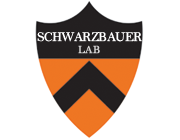A novel mode of cell detachment from fibrillar fibronectin matrix under shear.
Type
Cells within tissues are surrounded by fibrillar extracellular matrix (ECM) that supports cell adhesion via integrin receptors. The strength of cell interactions with fibrillar matrix and the effects of force on these interactions have not been quantified. To this end, we used a spinning disc device to apply radially increasing shear to human HT1080 fibrosarcoma cells attached to a cell-derived fibrillar fibronectin (FN) matrix. The shear required to detach 50% of HT1080 cells was eight times greater on a FN-coated, rigid glass substrate than on fibrillar FN matrix. Covalent crosslinking of the FN matrix increased its stiffness tenfold and produced a modest increase in shear detachment force for these cells. On FN-coated surfaces, cells detach by releasing interactions between alpha5beta1 integrin and FN. By contrast, cell detachment from fibrillar matrix occurred through a novel mechanism of fibril breakage, which left holes in the matrix visible by fluorescence microscopy. These results show that cells require less force to detach from fibrillar matrix than from FN adsorbed on glass and that detachment occurs through breaking fibrils instead of by release of integrin-matrix bonds. Thus, ECM fibril breakage is another molecular feature to consider when understanding cell and tissue homeostasis.

